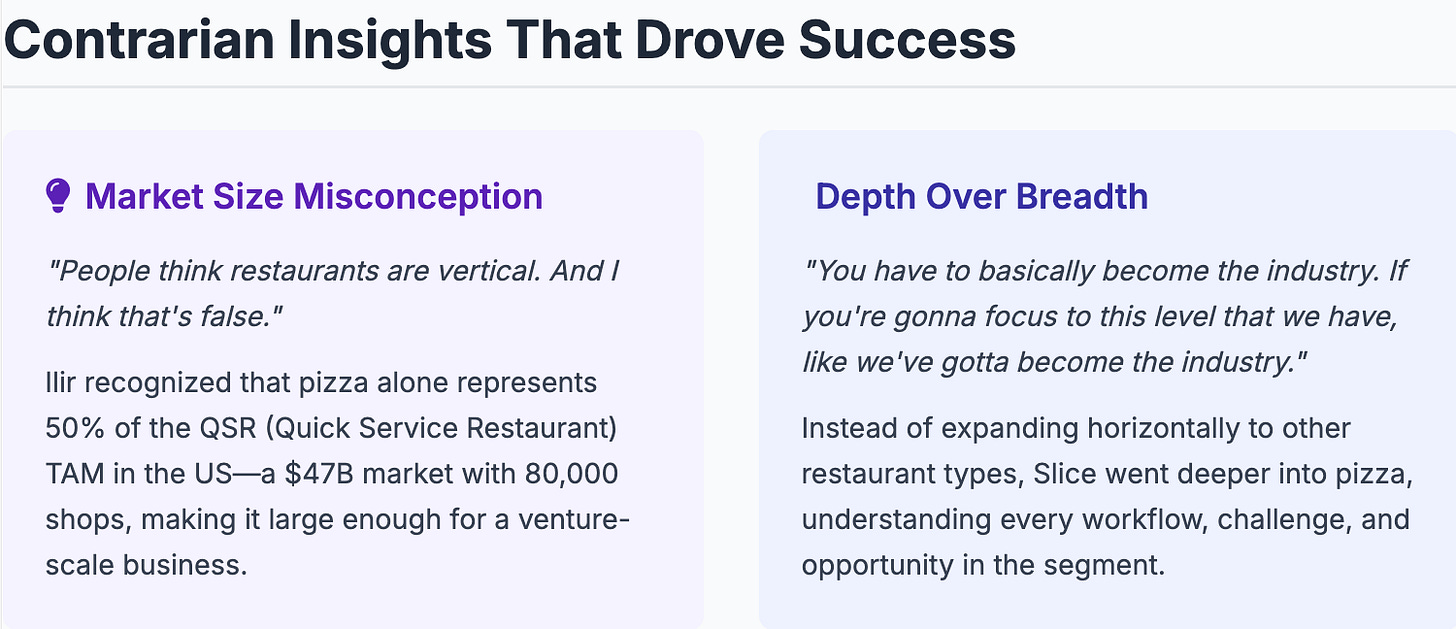I have some exciting news for you all, we are upping our content output to 2x a week instead of just 1x a week.
We just launched Verticals: A Weekly Biz Show Presented by Parafin where a founder (aka me / Luke Sophinos) intellectually spars with a VC (Nic Polous from Euclid VC) on all things Vertical Tech & AI.
Going forward, we will be sending out the show video + an additional newsletter every Wednesday morning at 10am EST, on top of our regularly scheduled programming that drops on Sunday nights.
Same great Vertical SaaS/AI content, just more of it and with added video content! Wednesday’s newsletter will be slightly different, Sunday’s will remain the same.
So let’s dive in already:
• Elise AI, a Vertical AI voice agent startup, that is interestingly focused on two unrelated verticals instead of one, Property Management and Healthcare raised $200m at a $2B valuation led by Andreessen Horowitz.
• Epic, the massive medical software monopoly in the EHR space, announces it is going to launch it’s own AI Scribe. Watching this play out will be very interesting as it’s the first system of record monopoly to compete head-on with AI start-ups that are/were integrating with it.
• Following the Epic news, Abridge, whose AI Scribe was available inside Epic, followed up the news by announcing they are going multi-product and launching an AI pre-authorization tool in partnership with Highmark.
• Elad Gil, a big time solo VC, dropped an interesting piece exploring the companies that each new LLM model launch has enabled.
Ilir Sela, Slice Founder & CEO Who Turned Pizza Shops Into a $47B Opportunity
From family pizza shop roots to serving 40% of America's independent pizzerias, the Slice CEO shares his contrarian playbook for vertical SaaS success. Check out the video interview on YouTube, listen on Spotify, Apple Music, or wherever you get your podcasts, or simply just read the takeaways below…
If you haven’t heard of Slice, it’s a beautiful business and an example of a Reverse Franchise. Ilir Sela, this weeks Vertical Titan, is the Founder & CEO has scaled it to serve 40% of America's independent pizzerias.
He bootstrapped for six years, reached ~$44 million in gross order value, ~$4 million in revenue, and profitable, without taking a single dollar of outside investment. He then started raising VC as and has scaled his business into an absolute powerhouse. But his roots are inspiring and humble…
"I'm Albanian. Albanians own a ton of pizza shops, including my family, all the way dating back to the 70s. My grandparents, my parents, my uncle, his wife, they all worked at a pizza shop called Charlie's Pizza in New York City."
— Ilir Sela, Founder & CEO of Slice
Nic and I dug in with Ilir on the Slice Story and how to Unbundle the Franchise below..
The Reverse Franchise Playbook by Ilir Sela (Founder & CEO @ Slice)
Ilir's journey to building Slice wasn't a typical Silicon Valley origin story. Starting in 2010 under the brand MyPizza.com, Ilir began building templated websites for pizza shops, enabling online ordering where customers previously had to call.
What seemed like a simple digitization play would evolve into something much more profound: a complete reimagining of how independent pizza shops could compete with the major chains.
"I actually called the model from the beginning a reverse franchise model, because I think that gives you a sense for how deep the capabilities kind of go. The fatal flaw [of traditional franchising] is that it forces uniformity across the board. The reality is, local geographies are unique. They're not all the same. And so forcing everyone to be the same and not be able to sort of adjust to the local flavors, local needs of the customer was actually a crutch for us."
— Ilir Sela, Founder & CEO, Slice
This insight became Slice's core differentiation. Instead of forcing pizza shop owners to abandon their local brand and operational preferences, Slice provides the technology infrastructure, supply chain benefits, and marketing reach of a major franchise while preserving what makes each shop unique to its community.
Ilir's bootstrapping journey wasn't just about capital efficiency—it was about forcing genuine product-market fit. Starting with family and friends, he personally onboarded the first 20-30 pizza shops, then hired inside sellers who called pizza shops directly. The pricing model was elegantly simple: $2 per order, a flat fee.
"We charged $2 per order. That's it. Flat fee. Any order that made it to the pizza shop, they paid $2. It was as simple as that. Kind of funny now with AI, there's all this talk about consumption-based models and pricing, and it's innovative. It's actually not that innovative. We’ve been doing it for ~15 years."
— Ilir Sela, Founder & CEO, Slice
This performance-based pricing aligned incentives perfectly—Slice only made money when pizza shops made money. It also provided immediate value demonstration: online orders averaged $35 compared to $18 for phone orders, directly improving shop profitability.
His Early Bootstrap Lessons:
Customer-first approach: Build for customer benefit, not VC approval
Product Discipline: Make the initial offering incredible - he didn’t expanded to his second product line until ~5 years into Slice’s founding
Profit discipline: Focus on unit economics from day one
High-touch sales: Personal relationships matter in fragmented markets
Performance pricing: Align success metrics with customer outcomes
From Pizza Shop Websites to Complete Platform: The Product Evolution
Phase 1: Online Ordering Websites
Started with templated websites enabling online ordering. Simple but transformative—moving analog phone orders to digital increased average order value by nearly 100%.
Phase 2: The Slice App
Created a consumer app connecting customers to local pizza shops, building a network effect while maintaining each shop's individual brand identity.
Phase 3: Slice Register (POS System)
Developed an in-store point-of-sale system, integrating online and offline operations while capturing more of the shop's workflow.
Phase 4: Phone Integration
Added phone answering services and supply chain solutions, moving toward becoming the complete operating system for pizza shops.
Phase 5: Fully Integrated Supply Chain
Leveraged Slice’s scale to drive discounts for EVERY independent pizza shop owner on all the supplies that they need to thrive, from pizza boxes, to utensils and napkins.
The Domino's Comparison
"If Domino's can be a $15 billion market cap company with 6,000 locations, and there are 55,000 locations available to Slice just in the US, I would argue we can be a much bigger business. But you have to match Domino's in terms of ACV. Domino's makes about $100,000 a year per location through a collection of supply and gross profit."
This framework helped Ilir understand the true potential: with nearly 10x the addressable locations, Slice could theoretically be much larger than Domino's by providing similar per-location value through technology and supply chain optimization.
Navigating Challenges in a Conservative Industry
The Google Crisis
Early in Slice's journey, Google decided their templated websites didn't meet guidelines and disabled every single one, cutting off shops that depended on the websites for business. This forced rapid technical pivots and highlighted the importance of platform diversification.
COVID-19: Crisis to Opportunity
When COVID hit and "business went to zero," Slice responded by raising $43 million from KKR and going on the offensive. Quarterly revenue jumped from $3-4 million to $15 million plus as delivery became essential.
The Analog Reality
Despite years of digital transformation, Ilir notes that "about half of our prospects are on cash register" and "80% of the volume is still passing through the phone." This highlights both the opportunity and the patience required in traditional industries.
"I wake up every day paranoid that something will happen today that will kill the company."
This healthy paranoia drives continuous innovation and risk mitigation, essential for companies serving critical business infrastructure to thousands of small businesses.
The Future: AI, Expansion, and Industry Leadership
Looking ahead, Ilir sees Slice's role expanding beyond software to become the complete operating system for independent pizza shops. The company is exploring AI applications, but with a practical approach focused on customer outcomes rather than technology hype.
"Our job is to focus on our customer and then use every capability possible to build products and services for that customer. AI is no different than anything else and we take that very seriously. But we also don't want to build AI for the purpose of AI."
Strategic Priorities:
Digitizing the analog: Moving the remaining 80% of phone orders to digital channels
Supply chain expansion: Matching Domino's $100K per location in supply and services revenue
AI integration: Practical applications that demonstrably improve shop operations
Market expansion: Capturing more of the 55,000 addressable pizza locations in the US
Key Takeaways for Vertical SaaS Builders
Positives/Pros
Bootstrap to prove product-market fit
Use performance-based pricing models
Go extremely deep in one vertical —> think beyond just industry categories. Think “sub verticals”.
Build high-touch customer relationships
Focus on customer outcomes over tech trends
Avoid This
Building for VCs instead of customers
Rushing to expand horizontally
Forcing uniformity on diverse markets
Underestimating analog-to-digital timelines
Innovating for innovation's sake
Choosing too-small addressable markets
The Pizza Shop Prophet
Ilir Sela's journey with Slice demonstrates that some of the best vertical SaaS opportunities exist in markets that seem too fragmented, too traditional, or too challenging for venture-backed businesses.
Through his industry roots, along with patient capital deployment, and an unwavering focus on customer success, he's built a platform that doesn't just serve pizza shops—it empowers them to compete with major chains while preserving what makes them unique.
"The real answer [to the best pizza] is the one closest to you. That's what you grew up with."
— Ilir Sela, on why local matters
In a world increasingly dominated by chains and platforms that prioritize uniformity over authenticity, Slice proves that technology can be used to strengthen local businesses rather than replace them.
The "reverse franchise" model isn't just a business strategy—it's a bet on the enduring power of community, authenticity, and the neighborhood pizza shop that's been feeding families for generations.
Go listen to this weeks episode to dig deep on all of the above or listen to it anywhere you get your podcasts!
Have a product or service that would be great for our audience of vertical SaaS founders/operators/investors? Reply to this email or shoot us a note at ls@lukesophinos.com

















